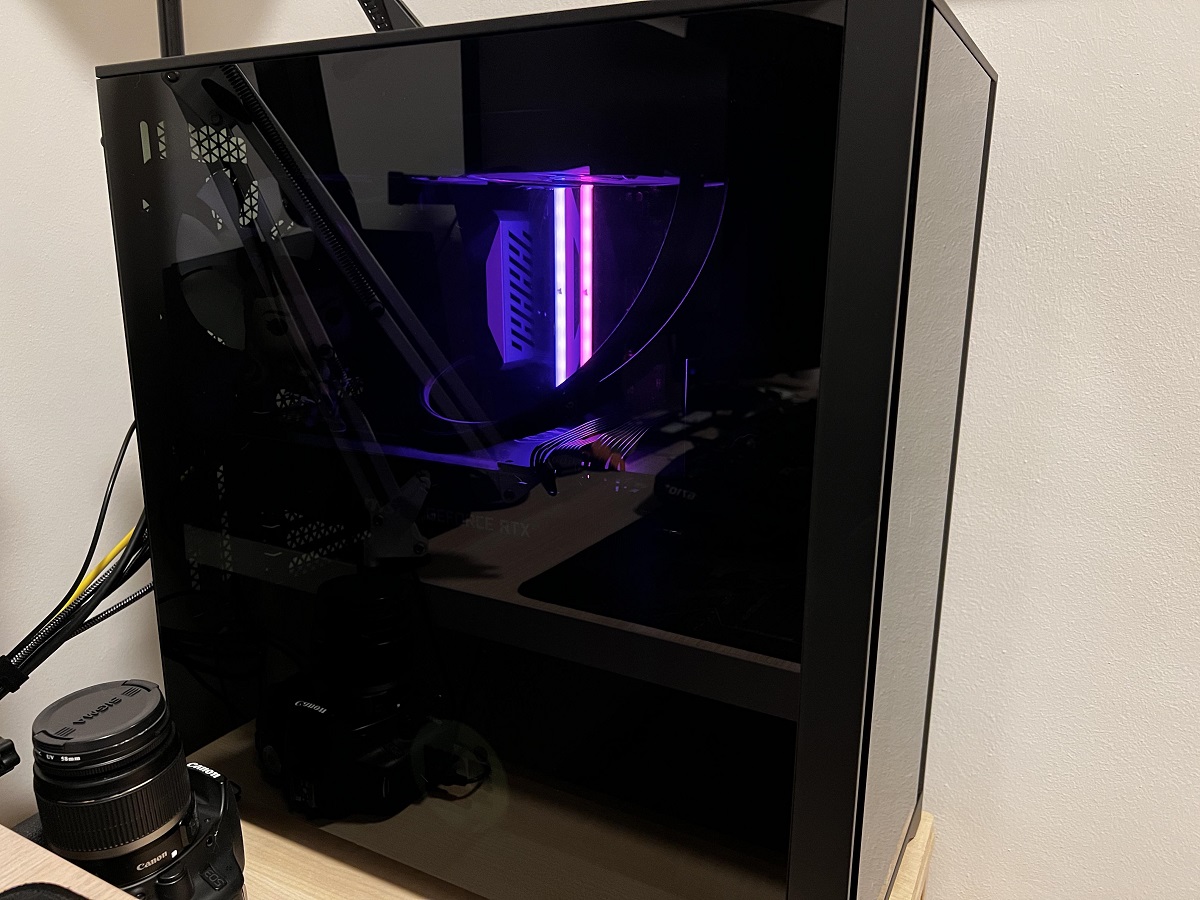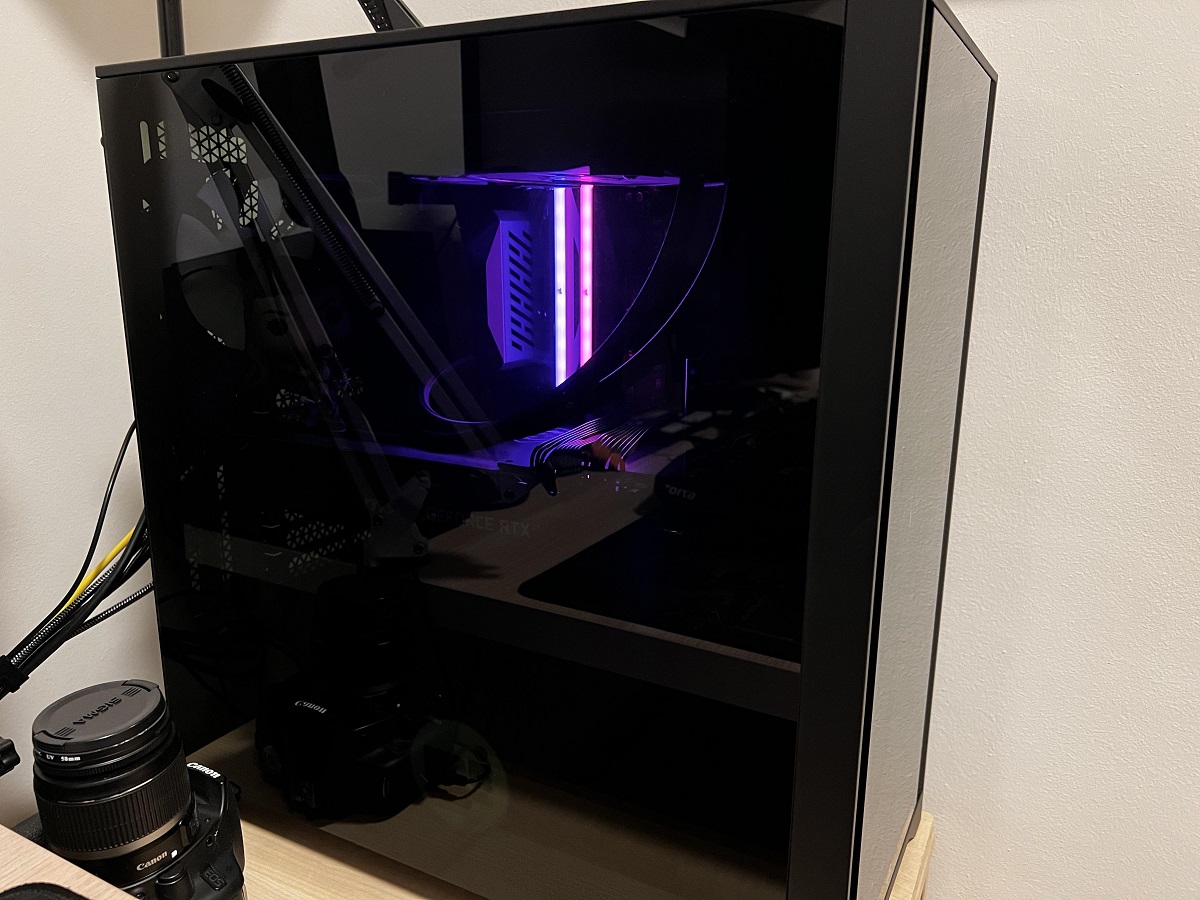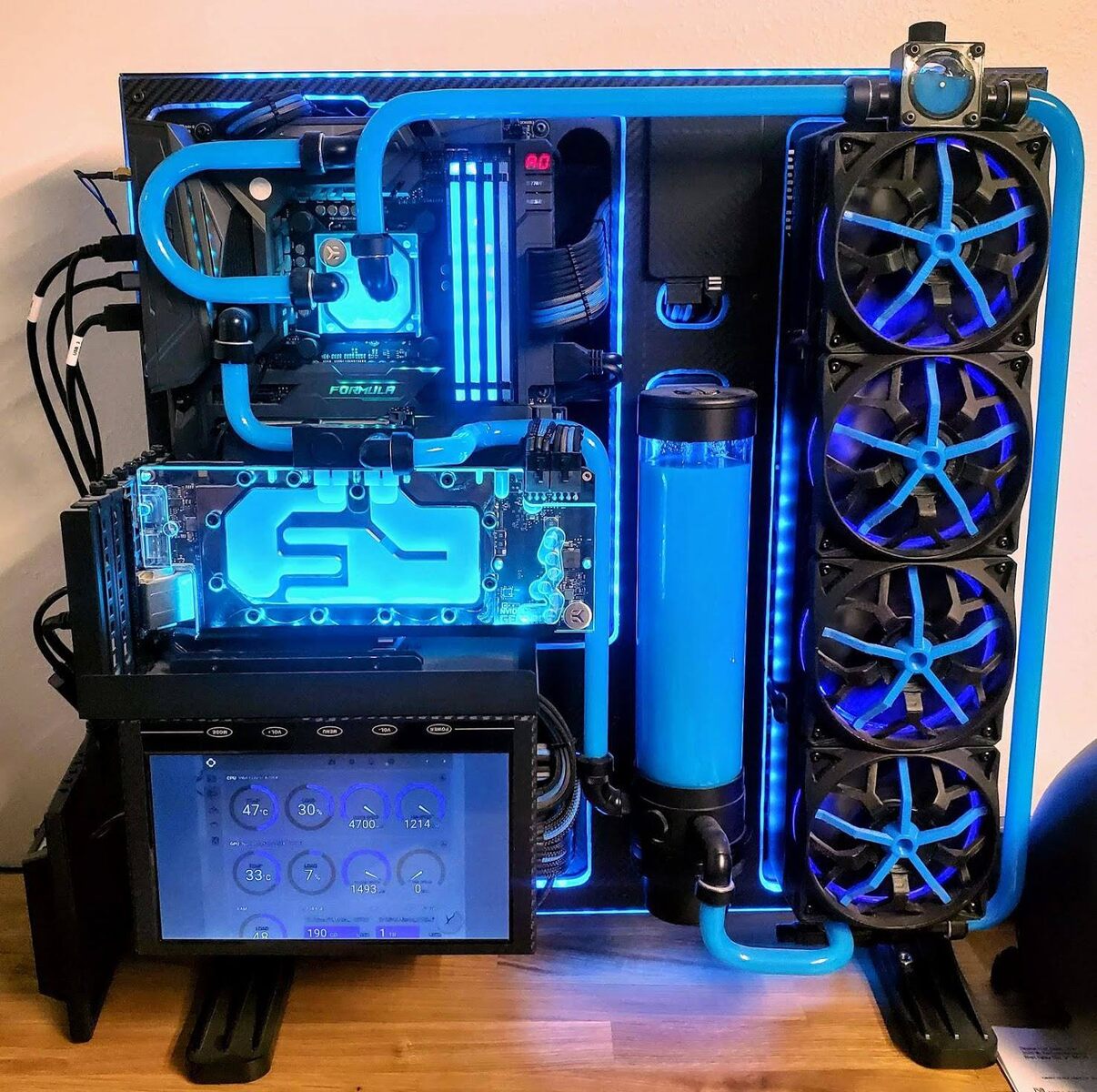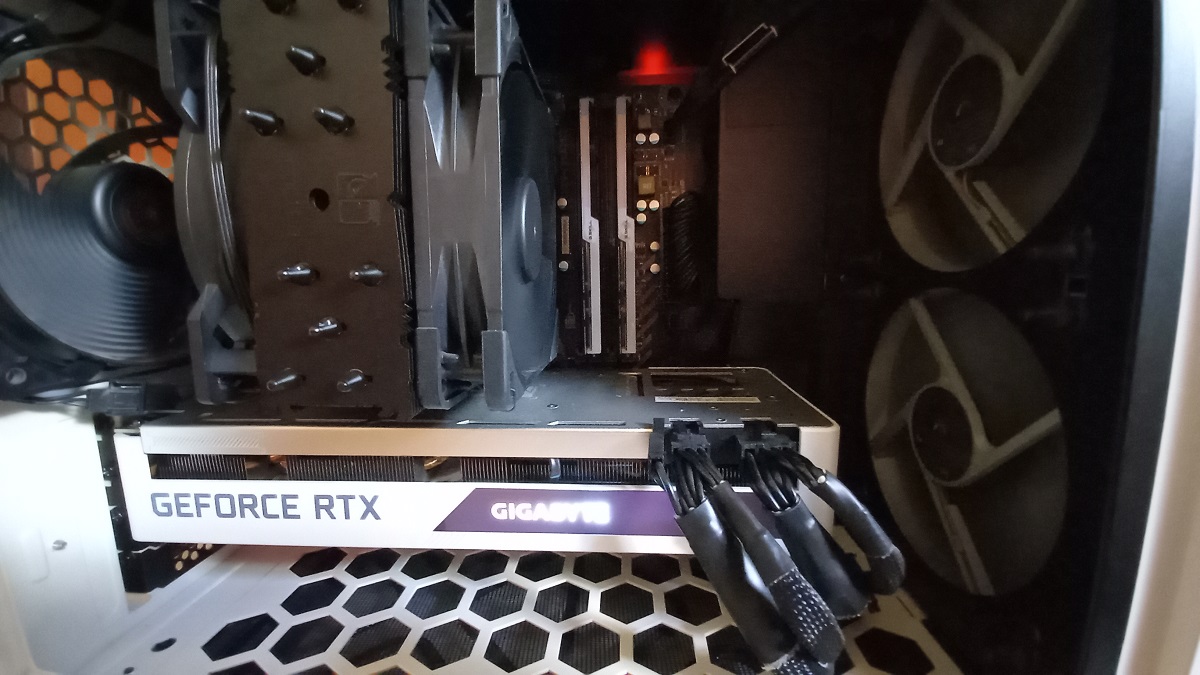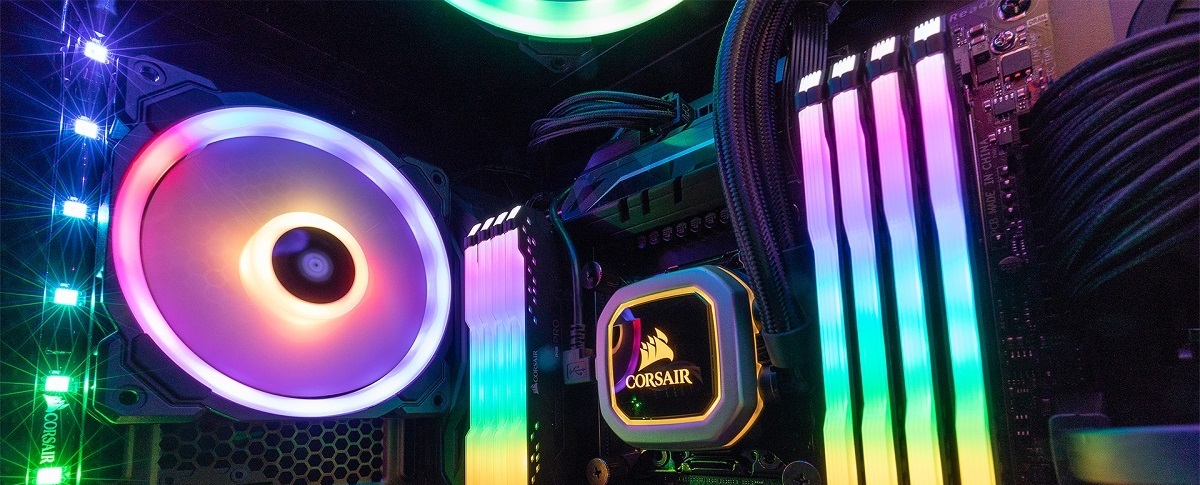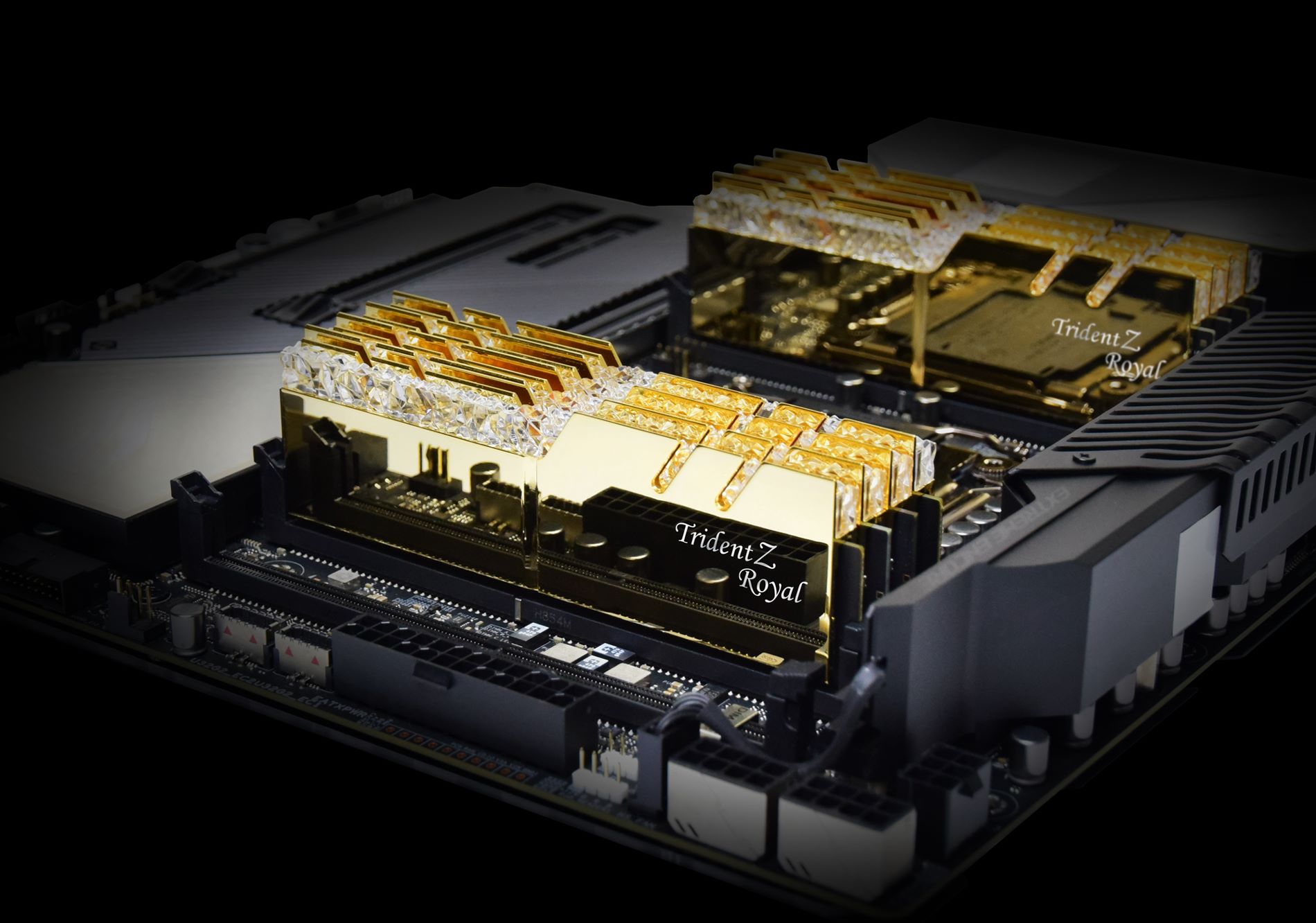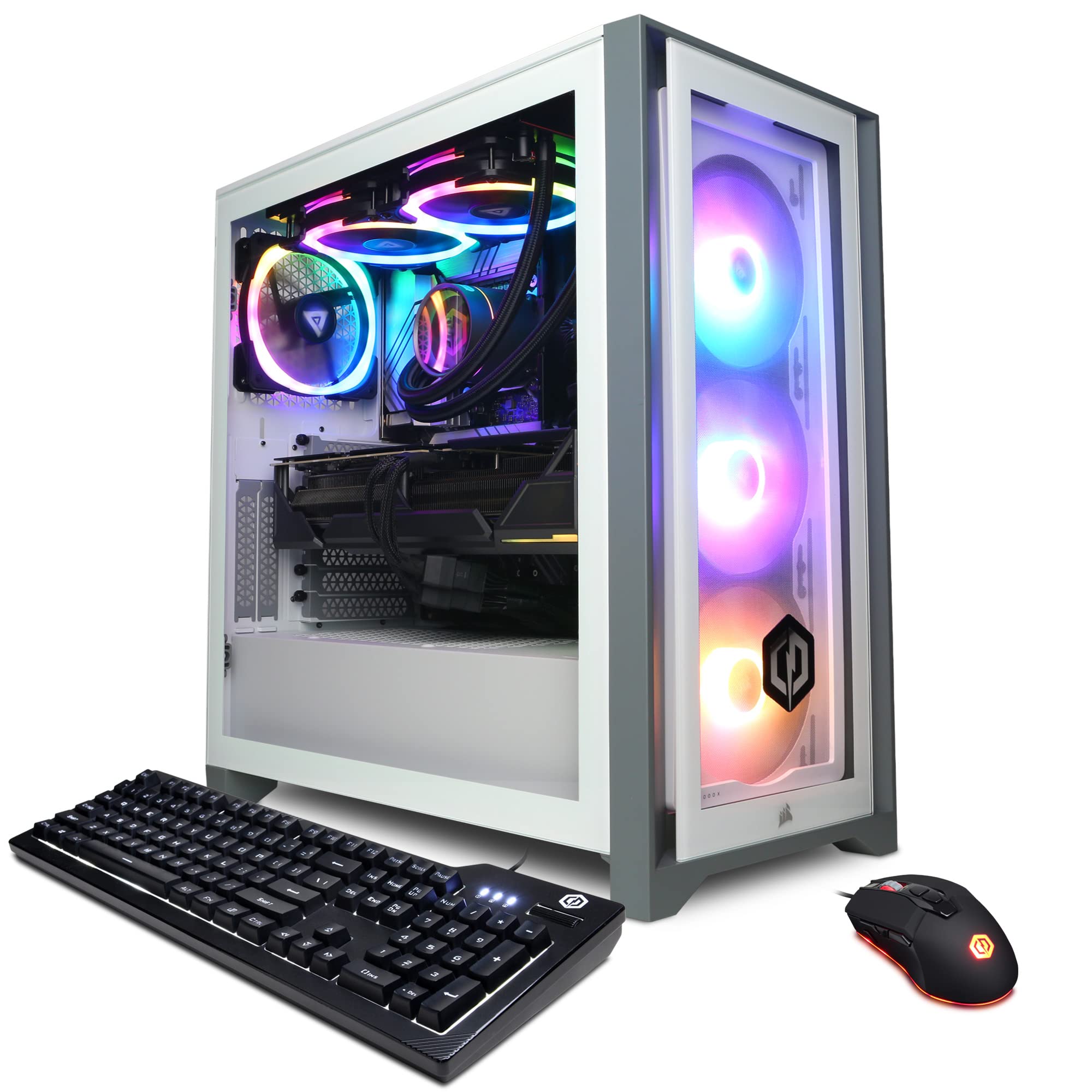Introduction
Welcome to the world of RGB (Red Green Blue) lighting, where customization and personalization meet technology. RGB lighting has become a popular trend in the world of computer hardware, allowing users to add a vibrant burst of colors to their gaming setups. From keyboards to mice, fans to motherboards, RGB lighting has found its way into various components, including RAM (Random Access Memory).
RAM RGB not only adds a visually appealing element to your computer but also gives you the freedom to customize the lighting effects based on your preferences. However, you may have noticed that your RAM RGB remains illuminated even when your computer goes into sleep mode. This continuous glowing can be distracting, especially when you’re trying to sleep or conserve energy.
To address this issue, we will explore different methods that allow you to turn off your RAM RGB when your computer is asleep. Whether you prefer tweaking settings in your computer’s BIOS or using software specifically designed for controlling RGB lighting, we have you covered.
So, if you’re ready to regain control over your RAM RGB lighting and optimize its usage, let’s dive into the different methods available to turn off RAM RGB when your computer is asleep. From BIOS settings to dedicated software, we’ll walk you through step-by-step instructions to help you achieve the desired outcome and create a more comfortable computing experience.
Understanding RAM RGB
Before we delve into the methods of turning off RAM RGB when your computer is asleep, it’s essential to have a basic understanding of what RAM RGB is and how it functions.
RAM RGB refers to the RGB lighting integrated into RAM modules. RAM, or Random Access Memory, is a crucial component of a computer that temporarily stores data that the CPU (Central Processing Unit) needs to access quickly. This data includes the operating system, applications, and files currently being used by the computer.
The addition of RGB lighting to RAM modules has become increasingly popular due to its aesthetic appeal. It allows users to customize and personalize the lighting effects on their RAM modules, matching their computer setups and enhancing the overall gaming experience.
RAM RGB typically consists of individually addressable LEDs embedded onto the RAM sticks. These LEDs can display a wide range of colors and lighting effects, including static colors, color cycles, pulsing patterns, and even synchronized effects with other RGB components in the computer.
Controlling RAM RGB often requires the use of software or accessing the computer’s BIOS settings. While software allows for more customization options and real-time adjustments, BIOS settings provide basic control over the lighting preferences.
It’s important to note that not all RAM modules come with RGB lighting. If you don’t have RAM RGB, the methods discussed in this article may not be applicable to your setup. However, if you do have RAM RGB and wish to turn it off when your computer is asleep, let’s proceed to the next section where we explore why it’s useful to do so.
Why Turn Off RAM RGB When Asleep?
While RAM RGB lighting can undoubtedly enhance the visual appeal of your computer setup, there are several reasons why you may want to consider turning it off when your computer is asleep.
1. Energy Efficiency: When your computer is in sleep mode, it is intended to conserve energy by entering a low-power state. However, if your RAM RGB lights remain illuminated, they continue to consume power unnecessarily. By turning off RAM RGB when your computer is asleep, you can ensure that your energy-saving efforts are not undermined by unnecessary lighting.
2. Distraction-Free Environment: RAM RGB lighting can be visually captivating, but it can also be distracting, especially when you’re trying to sleep or focus on other tasks in a dimly lit room. By turning off the RAM RGB lights when your computer is asleep, you create a more serene and distraction-free environment, allowing you to rest or concentrate without the visual stimulation.
3. Prolonged Lifespan: Like any electronic component, the lifespan of RGB LEDs integrated into RAM modules can be affected by continuous usage. By turning off the RGB lighting when your computer is in sleep mode, you reduce the overall usage time of the LEDs, potentially prolonging their lifespan and preserving the aesthetic functionality of your RAM RGB.
4. Personal Preference: While RGB lighting can be aesthetically pleasing, it’s ultimately a matter of personal preference. If you prefer a more minimalistic or subdued look for your computer setup, turning off the RAM RGB when your computer is asleep aligns with your preference for a cleaner and more understated aesthetic.
By considering the energy efficiency, creating a distraction-free environment, prolonging the lifespan of the RGB lighting, and catering to personal preferences, turning off RAM RGB when your computer is asleep can be a practical and beneficial choice. In the following sections, we will explore two different methods you can use to achieve this: through BIOS settings and with the help of software.
Method 1: Using BIOS
One of the methods to turn off RAM RGB when your computer is asleep is by adjusting the settings in your computer’s BIOS (Basic Input/Output System). The BIOS is firmware that initializes and controls the hardware components of your computer during the boot process.
It’s important to note that accessing and modifying BIOS settings requires caution and knowledge of your specific computer’s BIOS interface. The steps may vary depending on the manufacturer and model of your motherboard. Be sure to consult your motherboard’s manual or the manufacturer’s website for accurate instructions.
Here is a general step-by-step guide on how to turn off RAM RGB using BIOS:
- Restart or power on your computer and enter the BIOS menu. This is typically done by pressing a designated key (such as F2, Del, or Esc) during the boot process. The specific key varies, so check your motherboard manual or the manufacturer’s website for the correct key.
- Navigate to the “Advanced” or “Hardware Monitor” section in the BIOS menu. The location may vary depending on your BIOS version.
- Look for an option related to RGB lighting or RGB control. The name may differ depending on your motherboard manufacturer, but it is usually related to RGB or LED control.
- Select the option and set the RGB lighting to “Off” or “Disabled”. Some BIOS interfaces may provide additional control options, such as turning off RGB lighting only when the computer is asleep.
- Save the changes by navigating to the “Exit” or “Save & Exit” section of the BIOS menu. Confirm the changes and exit the BIOS.
After following these steps and saving the changes, your RAM RGB lighting should be turned off when your computer is asleep. It’s important to note that these settings will not affect the RGB lighting when your computer is awake or actively in use. If you want to revert to the default settings or enable the RGB lighting, you can return to the BIOS and make the necessary adjustments.
Keep in mind that the specific options and steps may differ depending on the motherboard and BIOS version you have. Therefore, it’s crucial to consult the documentation specific to your hardware for accurate instructions.
Method 2: Using Software
If accessing the BIOS settings seems daunting or unavailable, another method to control and turn off RAM RGB when your computer is asleep is by using dedicated software. Several software solutions are available that provide intuitive control over RGB lighting settings, including the ability to customize and disable the lighting effects.
Here is a step-by-step guide on how to turn off RAM RGB using software:
- Identify the RGB lighting control software compatible with your motherboard or RAM modules. The software may vary depending on the manufacturer, so consult the official website or documentation related to your hardware to find the appropriate software.
- Download and install the RGB lighting control software on your computer. Follow the installation instructions provided by the manufacturer.
- Once installed, open the RGB lighting control software. It may take a moment to detect and synchronize with your RAM modules or other RGB components on your computer.
- Navigate to the RAM RGB section or module within the software interface. This section may be labeled differently depending on the software you are using.
- Look for an option to turn off the RGB lighting or set the lighting mode to “Off” or “Disabled”. The software may offer additional customization options to fine-tune the lighting effects.
- Save the changes within the software interface. Some software may require you to apply the settings before they take effect.
By following these steps, you can control and disable the RAM RGB lighting using the software. It’s important to note that the specific interface and options may differ depending on the software and hardware you are using. Refer to the software’s documentation or the manufacturer’s website for detailed instructions tailored to your specific setup.
Using software to control RAM RGB lighting provides more flexibility and real-time adjustments compared to accessing BIOS settings. It allows you to customize not only the lighting effects but also synchronize the RGB lighting across various components in your computer. This method is often slightly more user-friendly and accessible to a wider range of users.
However, it’s important to keep the software up to date and ensure compatibility with your operating system and hardware to avoid any conflicts or instability issues. Check the official website or support channels of the software manufacturer for updates and troubleshooting information if needed.
Step-by-step Guide: Turning Off RAM RGB Using BIOS
If you prefer to turn off your RAM RGB lighting when your computer is asleep by adjusting the BIOS settings, follow this step-by-step guide:
- Restart or power on your computer and access the BIOS menu. Consult your motherboard’s manual or the manufacturer’s website to determine the specific key to press during the boot process to enter the BIOS. Common keys include F2, Del, or Esc.
- In the BIOS menu, navigate to the “Advanced” or “Hardware Monitor” section. However, please note that the exact location may vary depending on your motherboard’s BIOS version and manufacturer.
- Look for an option related to RGB lighting or LED control. The name of the option may differ depending on your motherboard. It could be labeled as “RGB Control,” “LED Control,” or something similar.
- Select the RGB lighting option and set it to “Off” or “Disabled.” Some BIOS menus may offer additional options, such as turning off RGB lighting only when the computer is asleep.
- Save the changes by navigating to the “Exit” or “Save & Exit” section of the BIOS menu. Confirm the changes and exit the BIOS.
After following these steps, your RAM RGB lighting should be turned off when your computer enters sleep mode. Remember that these settings will not affect the RAM RGB lighting while your computer is awake or in active use.
Please note that the specific options and steps may differ depending on your motherboard’s BIOS version and manufacturer. Ensure that you consult your motherboard’s manual or the manufacturer’s website for accurate and specific instructions tailored to your hardware.
Remember to exercise caution when making changes in the BIOS as incorrect settings may potentially disrupt the normal functioning of your computer. Always proceed with care and back up important data before making any changes to the BIOS.
Step-by-step Guide: Turning Off RAM RGB Using Software
If you prefer to control and turn off your RAM RGB lighting using dedicated software, follow this step-by-step guide:
- Identify the RGB lighting control software compatible with your motherboard or RAM modules. Visit the official website of your hardware manufacturer and look for the appropriate software for your specific components.
- Download the software from the manufacturer’s website and follow the installation instructions to install it on your computer.
- Launch the RGB lighting control software after installation. It may take a moment for the software to detect and synchronize with your RAM modules or other RGB components.
- Locate the RAM RGB section or module within the software interface. The labeling may vary depending on the software you are using.
- Look for an option to disable the RGB lighting or set the lighting mode to “Off” or “Disabled”. Some software may provide additional customization options to fine-tune the lighting effects.
- Apply the changes within the software interface. The software may require you to click on a “Save” or “Apply” button for the changes to take effect.
By following these steps, you should be able to control and turn off your RAM RGB lighting using the software. It is important to note that the specific interface and options may differ depending on the software and hardware you are using. Refer to the software’s documentation or the manufacturer’s website for detailed instructions customized for your specific setup.
Using dedicated software to control RAM RGB lighting offers greater flexibility and real-time adjustments compared to modifying BIOS settings. Along with turning off the lighting, you can customize various lighting effects and synchronize RGB lighting across different components in your computer setup. This method is often more user-friendly and accessible to a wider range of users.
Keep in mind that it is essential to keep the RGB lighting control software up to date to ensure compatibility with your operating system and hardware. Regularly check the official website or support channels of the software manufacturer for updates and troubleshooting information, if necessary.
Troubleshooting and Common Issues
While turning off RAM RGB when your computer is asleep is a straightforward process, you may encounter some troubleshooting issues along the way. Here are some common issues you might encounter and potential solutions:
1. Incompatibility: Ensure that the software or BIOS settings you are using are compatible with your motherboard and RAM modules. Check for any available updates for the software or firmware to minimize compatibility issues.
2. Software Glitches: If you are using software to control RAM RGB lighting and facing issues, try reinstalling the software or updating it to the latest version. You can also try restarting your computer to see if the issue resolves itself.
3. BIOS Warning: When accessing and modifying BIOS settings, be cautious and follow the instructions carefully. Incorrect changes in the BIOS can lead to system instability or failure to boot. Always consult your motherboard’s manual or manufacturer’s website for accurate instructions and guidelines.
4. Lack of Control: Some older or budget-oriented motherboards may not offer advanced RGB lighting control options in the BIOS. In such cases, using software specifically designed for RGB control becomes crucial. Ensure that your motherboard and RAM modules are compatible with RGB control software.
5. RGB Sync Issues: If you have multiple RGB components in your computer setup and want the lighting effects to synchronize, make sure that all components are compatible with the software or BIOS settings you are using. If synchronization is not working as expected, consult the documentation or support channels of the software or component manufacturer for assistance.
6. Limited Functionality: Certain software or BIOS settings may not offer the option to turn off RAM RGB lighting specifically when the computer is asleep. In such cases, you may need to manually adjust the RGB lighting settings each time you want it turned off. Alternatively, you can explore other software options or consult the manufacturer’s support for any available workarounds.
Remember that RGB lighting control can vary significantly based on hardware and software, so it’s important to refer to the documentation and official support resources for your specific components. If you encounter persistent issues or need further assistance, don’t hesitate to reach out to the manufacturer’s support team for guidance.
Conclusion
Controlling and turning off RAM RGB lighting when your computer is asleep can help improve energy efficiency, create a distraction-free environment, and potentially prolong the lifespan of the RGB LEDs. By following the methods discussed in this article, you can easily achieve this goal.
We explored two different approaches to turning off RAM RGB: using BIOS settings and utilizing dedicated software. Adjusting the BIOS offers a basic control option, while software provides more flexibility and real-time adjustments. Depending on your comfort level and hardware compatibility, you can choose the method that suits you best.
When accessing and modifying BIOS settings, it’s crucial to exercise caution and refer to the specific instructions provided by your motherboard’s manual or the manufacturer’s website. Incorrect changes in the BIOS can lead to system instability.
If you prefer software control, ensure that you use compatible RGB lighting control software provided by your motherboard’s manufacturer. Keep the software updated to maintain compatibility with your operating system and hardware.
While troubleshooting, be mindful of compatibility issues, software glitches, and the limitations of your hardware. Always refer to the official documentation and support channels for accurate instructions and solutions to common issues.
By turning off RAM RGB lighting when your computer is asleep, you can create a more comfortable environment, save energy, and preserve the lifespan of the RGB LEDs. Remember, customization and personalization are key when optimizing your computer setup to meet your specific needs and preferences.
Whether you choose to modify BIOS settings or use software, you now have the knowledge and tools to take control of your RAM RGB lighting. Enjoy the enhanced aesthetics, increased energy efficiency, and a more peaceful computing experience!







